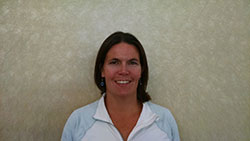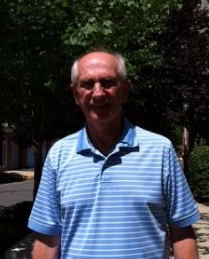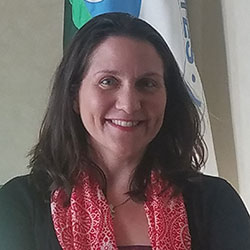Hazardous Waste Generator Improvements Final Rule
Sponsored by: Office of Resource Conservation and Recovery
Archived: Wednesday, November 30, 2016
2016-11-30
Office of Resource Conservation and Recovery
EPA recently overhauled the hazardous waste generator regulations under the Resource Conservation and Recovery Act (RCRA) to improve compliance and thereby enhance protection of human health and the environment. These changes are both a result of EPA's experience in implementing and evaluating the hazardous waste generator program over the last 30 years, as well as a response to concerns and issues identified by the states and regulated community. This webinar will delve into the recent changes and describe in detail:
- Which components of the hazardous waste generator regulatory program were revised;
- Which gaps in the regulations were addressed in this rule;
- The greater flexibility provided by this rule for hazardous waste generators to manage their hazardous waste in a cost-effective and protective manner;
- How the hazardous waste generator regulations were reorganized to make them more user-friendly and thus improve their usability by the regulated community; and
- What technical corrections and conforming changes were made to address inadvertent errors, remove obsolete references to programs that no longer exist, and improve the readability of the regulations.
Accessibility, Recording, and Content Disclaimer
Rehabilitation Act Notice for Reasonable Accommodation
It is EPA's policy to make reasonable accommodation to persons with disabilities wishing to participate in the agency's programs and activities, pursuant to the Rehabilitation Act of 1973, 29 U.S.C. 791. Any request for accommodation should be made to Christine Arcari at 703-308-8462 or arcari.christine@epa.gov, preferably one week or more in advance of the webinar, so that EPA will have sufficient time to process the request. EPA would welcome specific recommendations from requestors specifying the nature or type of accommodation needed. Please note that CLU-IN provides both alternate phone call-in options and closed captioning for all webinars, and requests for these specific accommodations are not necessary.
Webinar Recording
By participating in this CLU-IN webinar, you automatically agree to authorize recording of audio and visual content presented during this live event and consent to subsequent use of this recording in the public domain by the U.S. Environmental Protection Agency. This recording may include questions, comments and poll responses provided by you during the live event in addition to your name, voice, image or likeness. This recording will be made available after the conclusion of the live event as part of the CLU-IN webinar archives, and will remain available indefinitely. If you do not wish to consent to the recording, please do not join the live event, and contact Jean Balent at 202-566-0832 or balent.jean@epa.gov to discuss your concerns.
Content Disclaimer
This webinar is intended solely to provide information to the public. The views and opinions expressed as part of this webinar do not necessarily state or reflect those of the U.S. Environmental Protection Agency. It is not intended, nor can it be relied upon, to create any rights enforceable by any party in litigation with the United States, or to endorse the use of products or services provided by specific vendors. With respect to this webinar, neither the United States Government nor any of their employees, makes any warranty, express or implied, including the warranties of merchantability and fitness for a particular purpose, or assumes any legal liability or responsibility for the accuracy, completeness, or usefulness of any information, apparatus, product, or process disclosed, or represents that its use would not infringe privately owned rights.
Presenters:
 Kathy Lett, U.S. EPA, Office of Resource Conservation and Recovery (Lett.Kathy@epa.gov)
Kathy Lett, U.S. EPA, Office of Resource Conservation and Recovery (Lett.Kathy@epa.gov)
Kathy has been at EPA for 17 years, working primarily on hazardous waste recycling and generator issues, as well as some on energy conservation and waste water management. Recently Kathy has worked on the Definition of Solid Waste rulemakings and the Hazardous Waste Generator Improvements rule. She holds a B.A. in Comparative Literature from Hamilton College in Clinton, NY.
 Jim O'Leary, U.S. EPA, Office of Resource Conservation and Recovery (Oleary.jim@epa.gov)
Jim O'Leary, U.S. EPA, Office of Resource Conservation and Recovery (Oleary.jim@epa.gov)
Jim O'Leary has been around a long time! Jim began his career as an operations research analyst with Grumman Aerospace Corporation in 1965. In 1970, he moved to Washington, D.C. where he worked for several management consulting organizations as an operations research analyst. Since 1980, he has been with the U.S. EPA in Washington holding various management and non-supervisory positions, primarily with the Office of Solid Waste (now the Office of Resource Conservation and Recovery). Currently, he is a senior program analyst with the Materials Recovery and Waste Management Division where he develops rules and policies related to hazardous waste generation, waste determinations and recycling. Jim holds a B.A. degree from Queens College in New York City, and has completed graduate studies in public administration and economics from American University and Virginia Polytechnical Institute.
 MaryBeth Sheridan, U.S. EPA Office of Resource Conservation and Recovery (Sheridan.marybeth@epa.gov)
MaryBeth Sheridan, U.S. EPA Office of Resource Conservation and Recovery (Sheridan.marybeth@epa.gov)
MaryBeth Sheridan graduated from St. Lawrence University with a double major in environmental studies and biology and have a Master's degree in environmental policy and management from the University of Denver. MaryBeth has worked as an Environmental Protection Specialist for U.S. EPA's Office of Resource Conservation and Recycling since 1997, primarily on hazardous waste recycling and generation. Before coming to EPA, she worked as an environmental consultant, a technical writer for the Hazardous Waste Consultant, and an information specialist for EPA's RCRA/Superfund Hotline.
Moderators:
 Jean Balent, U.S. EPA Technology Innovation and Field Services Division (balent.jean@epa.gov)
Jean Balent, U.S. EPA Technology Innovation and Field Services Division (balent.jean@epa.gov)
Ms Balent is on the staff of the EPA's Technology Innovation and Field
Services Division
where she has worked to collect and disseminate hazardous waste
remediation and
characterization information since 2003. Ms Balent manages the Clean Up
Information
Network website and actively supports online
communication and
collaboration resources available to EPA. She formerly worked with the
US Army Corps
of Engineers Environmental Engineering Division in the Buffalo District.
Ms Balent was
also a member of the SUNY-Buffalo Groundwater Research Group where she
constructed and tested large scale models of groundwater flow. Ms Balent
has also
conducted research relating to the Great Lakes, environmental
remediation, and
brownfields re-development. She holds a Bachelor's degree in
environmental
engineering from SUNY-Buffalo and a Master's degree in Information
Technology from
AIU.
Webinar Slides and References:
Webinar Slides and References:
 Slide Presentation for Kathy Lett and Jim O'Leary, U.S. EPA, Office of Resource Conservation and Recovery
(717KB/PDF)
Slide Presentation for Kathy Lett and Jim O'Leary, U.S. EPA, Office of Resource Conservation and Recovery
(717KB/PDF) Webinar Transcript
(266KB/20pp/PDF)
Webinar Transcript
(266KB/20pp/PDF)
Additional Resources:
If you have a suggested topic or idea for a future CLU-IN internet seminar, please contact:
Technology Integration and Information Branch
PH: 202-566-0832 | Email: balent.jean@epa.gov
Technology Integration and Information Branch
PH: 202-566-0875 | Email: adam.michael@epa.gov





